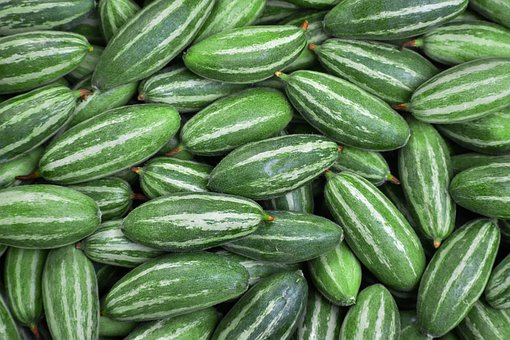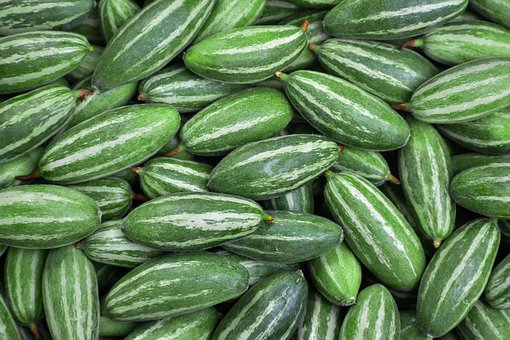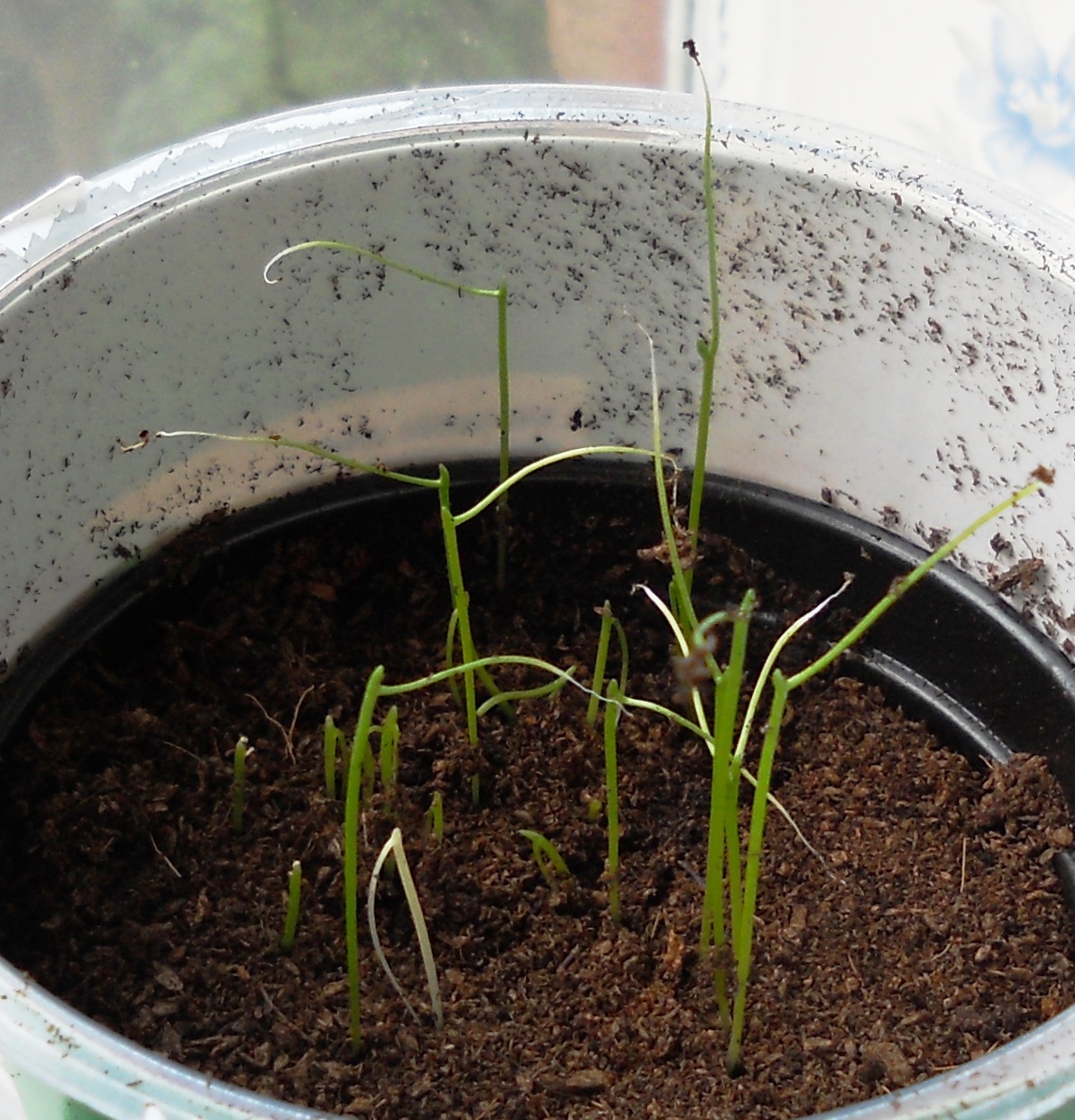Growing vegetables at home make us learn how to grow healthy and eat healthily. It is the process in nature to indulge in it while growing. Every vegetable is possible to grow if and only all the requirements are fulfilled. Therefore different types of vegetables can be chosen to make our garden beautiful.
Most vegetable gardens are made beautiful when the creepers are planted. One of the healthiest creepers that can be grown easily at home in less time and gives plenty of health benefits is this plant. Growing Pointed Gourd at home is easiest compared to others. Before knowing about the growing process, we should know more about Pointed Gourd.
What is Pointed Gourd?
Pointed Gourd is a perennial plant that can be suitably grown in tropical regions. It is indigenous to the Indian subcontinent. It is popularly known as Parwal at its native place. The scientific name of Pointed Gourd is Cucurbitaceae and belongs to the Gourd family. Probably Pointed Gourd is similar to the vegetable Ivy Gourd but larger in size.
Pointed Gourd has major health benefits as compared to other plants in the family. It consists of the rich amounts of vitamin A, C, and carbohydrates and also traces elements like potassium, magnesium, copper, and silver.
As Pointed Gourd has a good amount of vitamins, it helps in solving digestion problems. It controls the sugar levels in the body. As it gives a good amount of fiber to the body, it controls the cholesterol levels and reduces all the heart problems to keep it healthy. It helps in treating constipation. It also helps in blood purifying. It helps in flu infections. It also fights with aging. Therefore it is considered as a healthy vegetable used for weight loss programs too.
As Pointed Gourd is native to the Indian subcontinent, there are different names used for naming this plant. Some of the names are:
- English: Pointed gourd/Parwal
- Telugu: Kommu Potla / Chedu Potla
- Hindi: Parval
- Tamil: Kambu Pudalai
- Bengali & Assamese: Patol
- Marathi & Gujarati: Paraval
- Punjabi: Parwal
- Oriya: Patal
- Urdu: Prora
- Kannada: Kaadu Padaval
- Malayalam: Patolam
Cultivation
Seeds of the Pointed Gourd cannot produce germination processes because we cannot determine the sex of the seed before flowering so that they are unable to proceed with the germination. To produce germination and seeds, maintaining male and female ratio for cultivation is very important i.e, 9:1 ratio should be considered for female and male ratio respectively. We take the help of already grown plants while new seedling processes so that it can give fast growth. To grow Pointed Gourd the minimum and important step to follow is the propagation process for its seed. Therefore Pointed Gourd is harvested by cutting the vines and roots of the plant.
Also Read: Papaya Cultivation Guide
How to Grow Pointed Gourd?
Soil Requirement
Pointed Gourd requires light soils. It cannot be grown in heavy soils. The soils that are suitable for growing Pointed Gourd are like loamy or clay soil which is light soils. And also soil should have its PH value in the range of 6.0 to 6.5
Climate Requirement
The climate for growing the Pointed Gourd is warm. As it is a perennial plant, dry tropical weather and the hot temperature are preferred for cultivation. The plant will not support growth in frosting and cold regions. Therefore it prefers a hot humid climate and does not prefer cool weather, the climate that comes after monsoon is mostly preferred to grow the Pointed Gourd.
Distance between pointed gourd plants
As Pointed Gourd is a vein producer, this needs more space for creeping. But the space given to it depends upon how we train the veins. Approximately the distance should be 1.5 meters x 1.5 meters or 2 meters X 2 meters should be maintained between two plants.
How to Plant Pointed Gourd?
Land preparation:
Before we plant the seeds, the soil should be allowed to plow up to 2 to 3 times to get fine soil. Adding Manure to the soil is very important. Manure selection for cultivation is a crucial step. Farmyard manure is suggested to be used for cultivation. It gives a good yield to vegetables.
Propagation method:
- Seed propagation:
Seed propagation is a late process that takes a long time for converting seed into a plant and then into flower. Because the reproductive progeny takes time in the seed. Usually, flowering fruiting plants use pollinating processes, mostly seed propagation is used only for staminate plants.
- Vegetation propagation:
Vegetation propagation is the process where it tries to reproduce the plant from an already grown plant so that it gives fast results. A 1meter long root will be cut from a one-year-old plant and is rooted in the same plant i.e If a plant is rooted in October, in February, or march the plant should be transplanted into fields and again in October 1meter root of that matured plant is cut and directly rooted into 20meters to 30meters deep in the same plant and covered with moist soil.
By this 90% of the growth required from the sowing the seed to growing into the plant will be fastened. So that the plant grows faster and the growing process will be easier by cutting and using the matured plant.
Mostly this process is used for growing the Pointed Gourd. Because this is the fastest and easiest growing method of the Pointed Gourd.
- Tissue propagation:
Tissue propagation is multiple production methods which are produced from the small piece of organ culture in the small space. This small space provides a nutrient medium for propagation.
Planting process:

In the planting process of Pointed Gourd, root suckers, or cut veins are used. These are collected from the mature and one-year-old plant so that for the easy process of cultivation. The roots used for rooting new plants should consist of a minimum of 8 to 10 nodes of the root so that it can help in harvesting. The roots used for planting are also rerooted plants. But the condition is the roots or veins collected should be fresh. These roots will be replanted after the subdivision of the plant. They will help in controlling all the circumstances. And also the main condition is to collect the roots in the ratio of 9:1 of female roots and male roots respectively which helps in the germination process.
By using this process the faster and easier cultivation process takes place. And the result will be approximately produced in a one-month duration only.
Irrigation requirement:
Irrigation is the most important part of growing Pointed Gourd. As soon as the rooting process ends, the first irrigation process starts. This plant does not take the overflow of water. The excess water may lead to rot of plant roots. So removing excess water is very much required for this plant, mainly in the rainy season. It is better to use a drip irrigation or sprinkling process. So that the weed occurrence will be avoided and the soil will be moist.
Fertilizers and Manure usage
Manure used should be well decomposed that is used for cultivation. As mentioned above, Farmyard manure is well-decomposed manure.
Applying micronutrients and macronutrients should be provided to achieve good results. Macronutrients that should be considered are Phosphorous, Nitrogen, and Potassium. They should be split into dosages for avoiding an excessive amount of chemicals.
Before managing the nutrients, soil testing should be done. After soil testing, fertilizing the soil is a mandatory step. So, for fertilizing and nutrition management too many chemicals will be used. Therefore in the time of spraying the chemicals, the dosage should be maintained so that the soil will not get dry and poisonous.
After providing all the required ingredients, land should be irrigated.
Pests and Diseases
The diseases that can be occurred for Pointed Gourd are:
- Fruit flies
- Fruit Rot
- Mosaic viruses
- Epilachna beetle
- Red beetles
- Red Pumpkin beetle
- Root-Knot Nematode
- Downy Mildew
All these diseases that occur will be most in the rainy season, because of the excess water provided to the plant. They occur due to the forming of viruses, fungus, pests, and insects.
These pests and diseases can be controlled by providing Potassium, Nitrogen, and Phosphorous in the required amount for the land. Potassium can be used up to 40 to 50 kg, Nitrogen can be used up to 60 to 80 kg and Phosphorous can be used up to 40 kg. These can be used as fertilizers for the hectare of land.
How to Harvest Pointed Gourd?
Usually, after rooting the vines and after transplanting in the month of February, the plant starts fruiting in 120-140 days and it completes till approximately September. From 15-18 days after pollination, they are ready for harvesting. The fruit will be ready between July to October months. Harvesting should have happened between these days. Because fully ripened fruits are not suitable for eating. They should be harvested before they reach a fully mature stage. Therefore before tuning into fruit, the Pointed Gourd vegetable should be harvested.
Yielding process:
The yielding of Pointed Gourd is mainly dependent upon growth management, nutrition management, fertilizers, and irrigation management. The estimation of the yielding can be 15 to 20 tonnes per hectare.
Hybrid varieties of the Pointed Gourd
- Swarna Rekha
- Swarna Suruchi
- Swarna Alaukik
- Rajendra Parwal-1
- Rajendra Parwal-2
Pointed Gourd Plant Care Tips
Mainly while harvesting, the main steps to be taken are nutrition management, fertilizers, and irrigation management. These will ensure the good growth of the crop.
Post-Harvest management:
Pointed Gourd vegetables should be cleaned after harvesting. They should be cleaned before use.
Conclusion
Pointed gourd can be used as a good alternative at home gardens in the view of nutritious vegetables. As it consists of extraordinary health benefits, it should be preferred to consuming.
The exploitation of Pointed Gourd is very much indeed for the Asian subcontinent countries India and Bangladesh. This can be produced by the hybridization process. This hybridization can be processed by using genetic progeny. This process is conducted by collecting the veins from parental clones. Different types of species can be produced in large amounts by this genetic progeny. This process leads to the production of new genetic spices, which helps in the expansion of the very important crop Pointed Gourd.
This is a very important vegetable in terms of health and wealth too. It can be commercially increased all over the world by the form of genetic progeny. Then the species can be exported to other countries all over the world. There are already many species that exist in the countries India and Bangladesh. They can also give a high yielding rate to the farmer. To grow crops properly, macronutrients, micronutrients, and fertilizers should be equally supplied to the crops in the form of dosages. Then after irrigation should be processed and maintained properly. By the maintenance of these processes, the crop can give healthy growth with extraordinary results.


